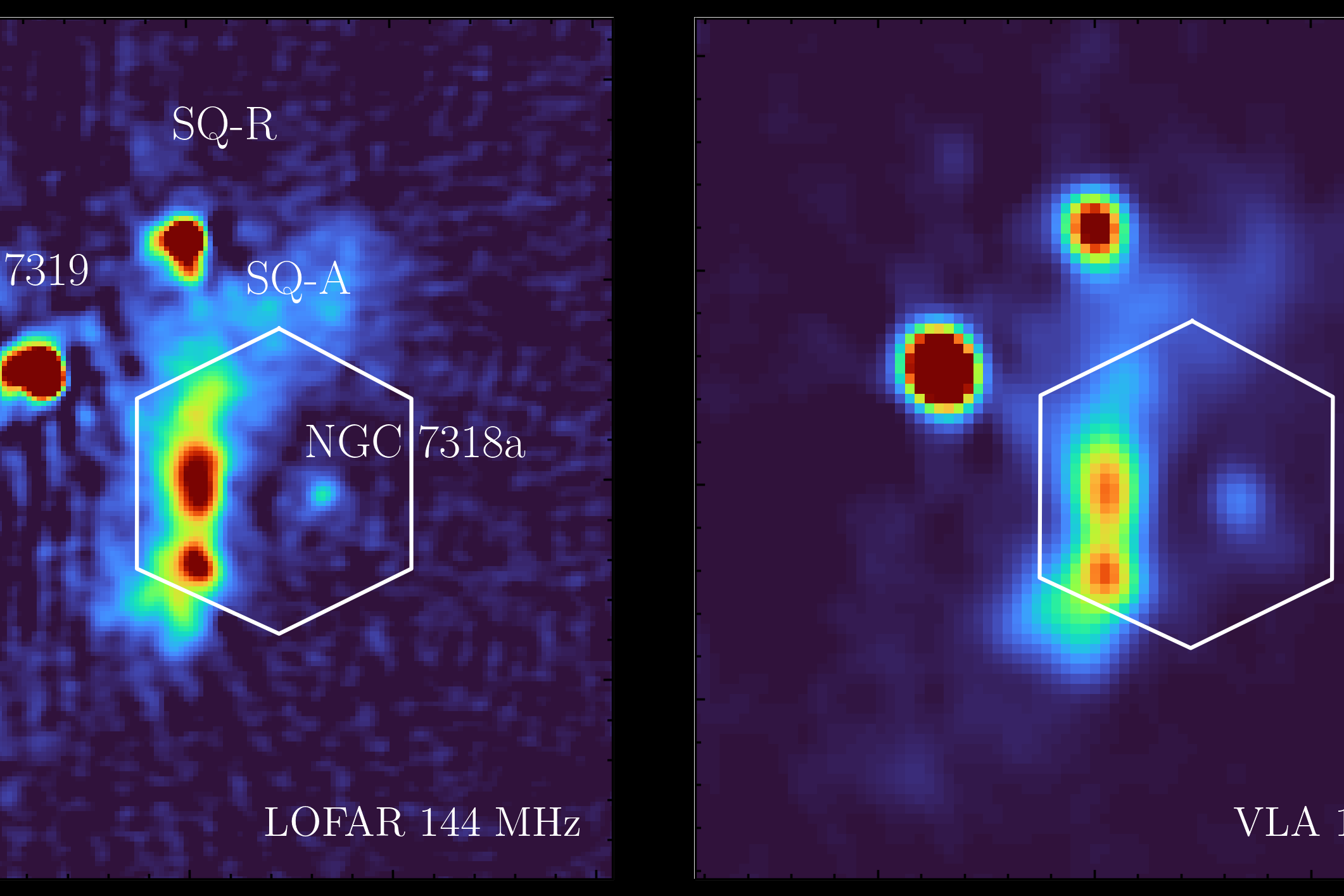Two-million-miles-per-hour galaxy collision seen in detail
The impact was observed in Stephan’s Quintet, a nearby galaxy group made up of five galaxies.

Your support helps us to tell the story
From reproductive rights to climate change to Big Tech, The Independent is on the ground when the story is developing. Whether it's investigating the financials of Elon Musk's pro-Trump PAC or producing our latest documentary, 'The A Word', which shines a light on the American women fighting for reproductive rights, we know how important it is to parse out the facts from the messaging.
At such a critical moment in US history, we need reporters on the ground. Your donation allows us to keep sending journalists to speak to both sides of the story.
The Independent is trusted by Americans across the entire political spectrum. And unlike many other quality news outlets, we choose not to lock Americans out of our reporting and analysis with paywalls. We believe quality journalism should be available to everyone, paid for by those who can afford it.
Your support makes all the difference.A massive collision of galaxies sparked by one travelling at two million miles per hour (mph) has been seen in unprecedented detail by one of Earth’s most powerful telescopes.
The impact sparked an immensely powerful shock similar to a sonic boom from a jet fighter – the likes of which are among the most striking phenomena in the Universe, experts suggest.
It was observed in Stephan’s Quintet, a nearby galaxy group made up of five galaxies first sighted almost 150 years ago.
A team of scientists led by the University of Hertfordshire captured the event using the new 20 million euro William Herschel Telescope Enhanced Area Velocity Explorer (Weave) wide-field spectrograph in La Palma, Spain.
Dr Marina Arnaudova said: “Since its discovery in 1877, Stephan’s Quintet has captivated astronomers, because it represents a galactic crossroad where past collisions between galaxies have left behind a complex field of debris.
“Dynamical activity in this galaxy group has now been reawakened by a galaxy smashing through it at an incredible speed of over two million miles per hour, leading to an immensely powerful shock, much like a sonic boom from a jet fighter.”
The researchers uncovered a dual nature behind the shock front, previously unknown to astronomers.
They found that as the shock moves through pockets of cold gas, it travels at hypersonic speeds, powerful enough to rip apart electrons from atoms, leaving behind a glowing trail of charged gas.
However, when the shock passes through the surrounding hot gas, it becomes much weaker, according to PhD student Soumyadeep Das, of the University of Hertfordshire.
He added: “Instead of causing significant disruption, the weak shock compresses the hot gas, resulting in radio waves that are picked up by radio telescopes like the Low Frequency Array (LOFAR).”
The new insight and unprecedented detail came from Weave, combining data with other cutting-edge instruments, and the James Webb Space Telescope (JWST).
The findings are published in the Monthly Notices of the Royal Astronomical Society journal, and researchers believe that Weave is set to revolutionise our understanding of the Universe.